Tom's Guide Verdict
The Wayward Manor is a good, lighthearted puzzle game, but people looking for more engaging story or gameplay won't want to haunt this mansion.
Pros
- +
Strong music and writing
- +
Good replayability
Cons
- -
Clunky controls
- -
Inconsistent pacing
Why you can trust Tom's Guide
An old ghost awakens in the attic of a decrepit New England mansion to find that the venerable structure has been invaded by the worst monsters of all — humans.
Available on PC and Mac via Steam for $9.99, The Wayward Manor by game studio Odd Gentlemen is a solid, entertaining puzzle game with a fun Halloween-like aesthetic, well-suited for both kids and adults. Fantasy fans may want to take special note: the game's narrator and creative collaborator is Neil Gaiman, author of Coraline, Sandman, American Gods and other books.
MORE: 10 Best Mobile Games for Hardcore Gamers
Story
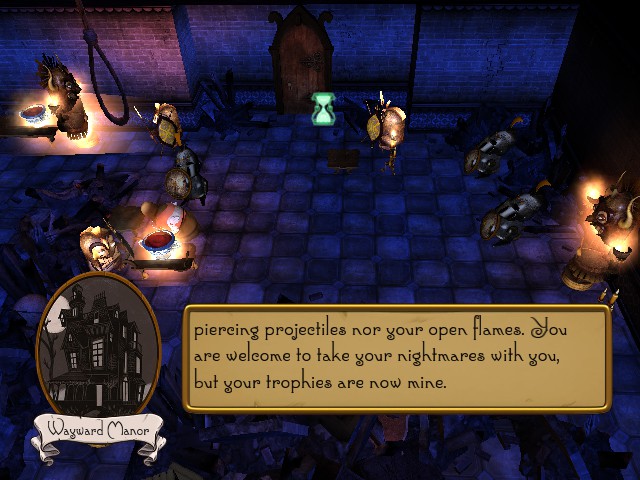
As a ghost, your task is to frighten humans out of the house. You're doing it both for your own benefit and that of the manor itself, which is sick of loud, rude humans in its rooms.
The manor's character is your narrator and guide throughout the game. Not only does the manor's dialogue, both spoken in cutscenes and written in textboxes within the levels, have Gaiman's signature spooky-yet-whimsical voice, littered with phrases like "you are welcome to take your nightmares with you" and "Well done, My Dead Friend," but it's voiced by Gaiman himself in the cutscenes.
The human family who've taken up residence in the house are cartoonishly horrible and, hence, worthy of eviction. The man of the house, Mr. Budd, is an alcoholic snob. His wife, Mrs. Budd, is absurdly vain, the children are greedy gluttons and Grandpa Budd is a paranoid ex-safari hunter.
There's a plot twist involving the butler, ominously named Toombs, and a young serving girl, whom the house seems to tolerate because she's not as annoying as the other humans. The twist kept the story engaging, but it was abrupt and left me with little investment in the changes that occurred.
Get instant access to breaking news, the hottest reviews, great deals and helpful tips.
However, the story provides a great reason to go after extra achievements: As a vengeful spirit, you would want to find new ways to make your unwanted houseguests miserable.
Wayward Manors overall feel is similar to Gaiman’s children's novels Coraline and The Graveyard Book, but The Wayward Manor never reaches the horror or drama of either — nor does it try to.
Gameplay
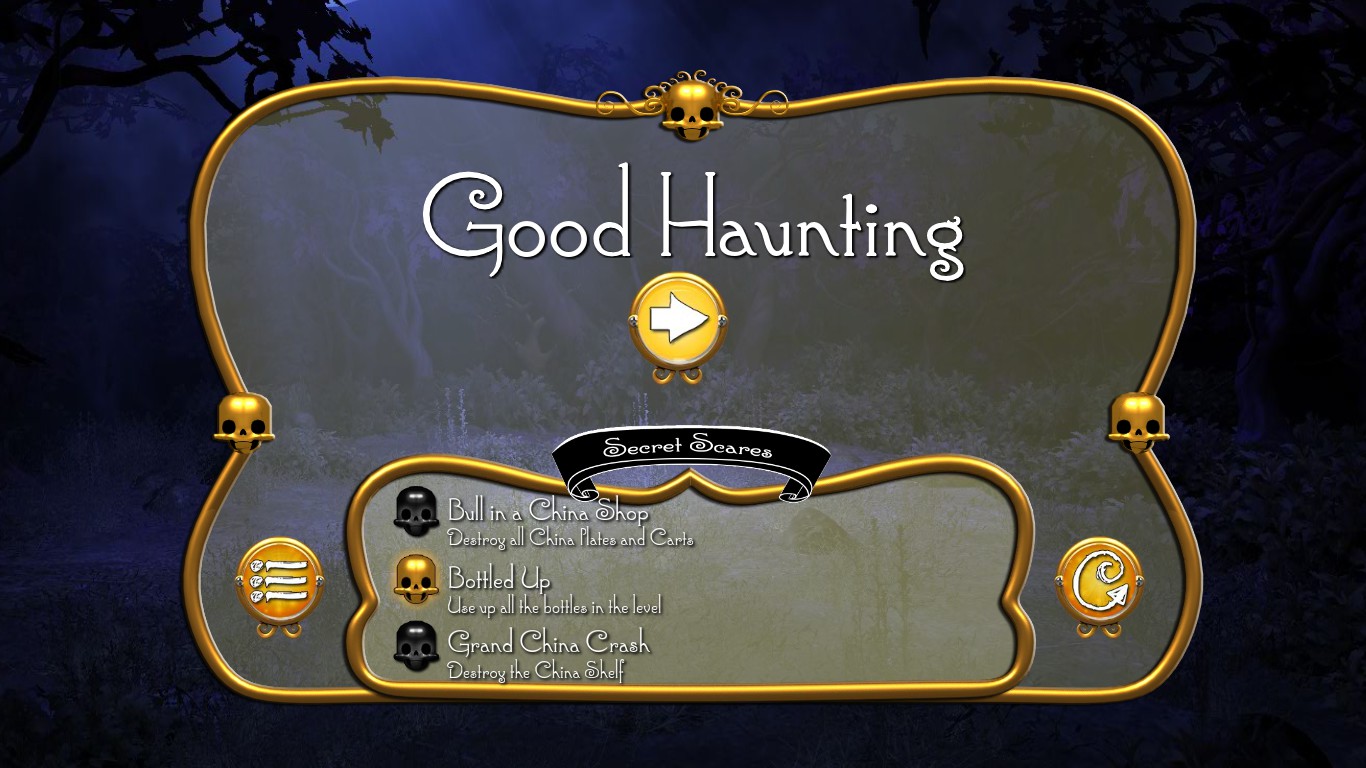
To scare the humans out of the house, players click on various items in the room in order to interact with them. Wobbly bottles will fall from their shelves; rickety suits of armor will clatter and draw attention; old window shutters will fly open, letting in blasts of air.
Each character must be scared in slightly different ways. The children can be frightened only if you separate them; if together, they'll just laugh. The grandfather will shoot crossbow bolts at anything that moves. Dagmara follows noises such as rattling suits of armor, but Mr. and Mrs. Budd are less easy to control.
MORE: Top 10 Coolest Nintendo 3DS Games
The game has five stages, with five to seven levels each, similar to mobile puzzle games such as Angry Birds or Cut the Rope. Each level must be beaten to proceed to the next, and previously beaten levels can be replayed at any time.
In each level, the player must scare a human six times. There usually are more than six ways to get those scares, which keeps the game interesting. Each level has bonus challenges, such as scaring someone in only one way, or scaring two people at once, which are fun and innovative.
Levels took between five and 15 minutes to beat, and the overall game took less than five hours to beat without explicitly going for bonus goals.
I played The Wayward Manor via Steam on a Windows 8 laptop with an Intel i5 processor and a NVIDIA Geforce GT 650M graphics card. The controls felt rather sticky; I often saw my cursor transform into a glowing green hourglass, and there were delays between clicking objects. Players will have to factor in such delays as they plan multistep actions.
The game's been released for PC and Mac, but I'd like to see a mobile version; the short play sessions and click-based interaction would be perfectly suited for tablets and smartphones.
Art/graphics
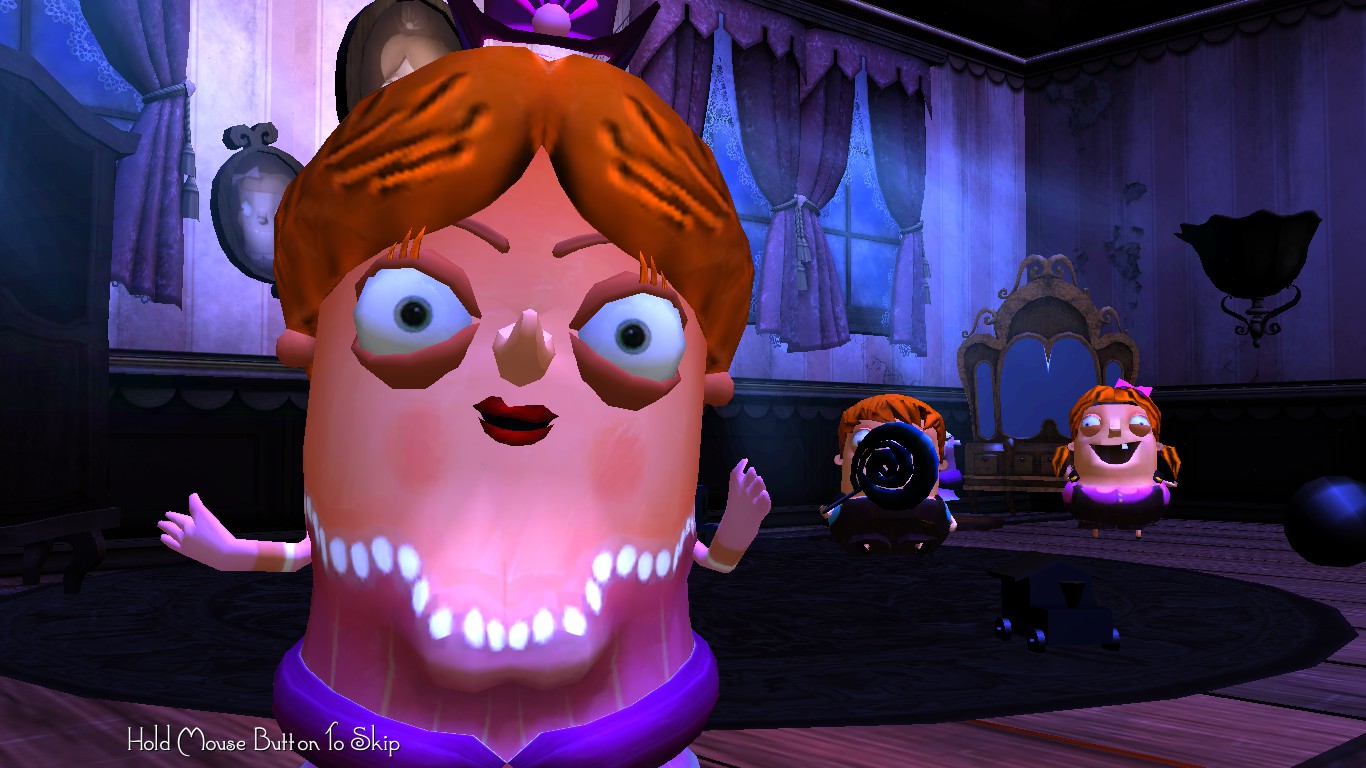
The Wayward Manor boasts 3D graphics and was designed with a goofy funhouse look. While the ghost you play is never seen, the other characters are squat, cartoonish figures with pill-shaped bodies, large eyes and other out-of-proportion features. This style, while great at setting the game's mood, can be eyebrow-raising, as was the case with Mrs. Budd — what I thought was her "double chin" turned out to be her cleavage in a low-cut dress.
Music
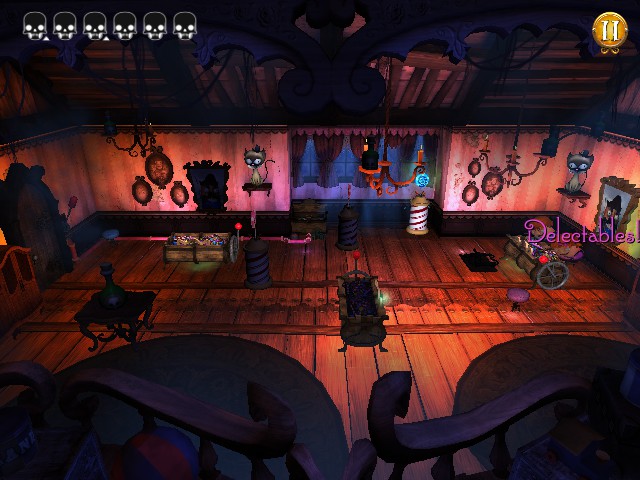
The Wayward Manor is all about taking a haunted house and making it whimsical, and nowhere is this better accomplished than in the music. A Jazz Age-style musical score plays throughout the game, blending creepy atmospheric reverberations with jazzy swing trumpets and musty piano waltzes.
MORE: 10 Best Video Game Couples of All Time
Nearly all the sound effects are music. Characters' moods and noises, such as laughter and shivers of fear, are represented as tittering wind instruments. Scares are accompanied by a ghostly human voice singing "Ooo" in harmony with the music.
And, of course, there's Gaiman's voice acting. Here, too, The Wayward Manor finds its signature blend of spooky and silly in Gaiman’s solemn and occasionally sarcastic tone.
Bottom line
Before I played The Wayward Manor, all I knew was that Neil Gaiman was involved. It was the main reason I was interested — I once waited three hours to get him to sign a book — and I was a bit disappointed once I realized it was merely a stage-based puzzle game rather than a narrative-rich experience.
I’m very glad I kept playing, because that initial reaction wasn't at all fair. The Wayward Manor may have its problems, but it is a fun, unique puzzle game that kept me engaged, both as a gamer and as a Gaiman fan.
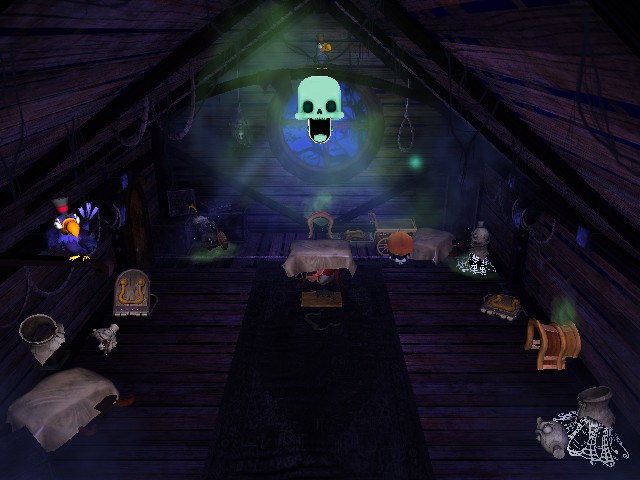
- 10 Best Indie Games You've Never Heard Of
- 'Destiny' and Console Exclusivity: Why It's Gone Too Far
- Most-Anticipated Games of 2014
Email jscharr@tomsguide.com or follow her @JillScharr and Google+. Follow us @TomsGuide, on Facebook and on Google+.
Jill Scharr is a creative writer and narrative designer in the videogame industry. She's currently Project Lead Writer at the games studio Harebrained Schemes, and has also worked at Bungie. Prior to that she worked as a Staff Writer for Tom's Guide, covering video games, online security, 3D printing and tech innovation among many subjects.

